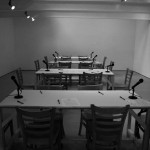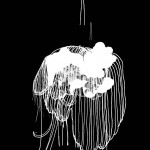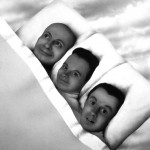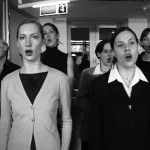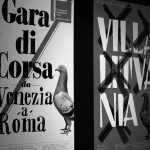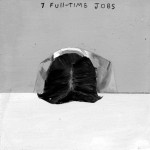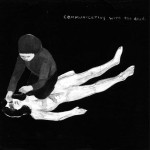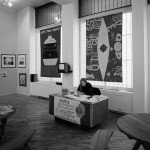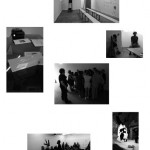– Pil & Galia Kollectiv ;
– Ultra-red ;
– Qubo Gas ;
– General Idea ;
– KLAT ;
– International Neucronautical Society ;
Official Document
Title: Declaration Concerning the Relationship between Art and Democracy
Type: INS declaration
Authorised: First Committee
INS Authorisation Code: TMcC010703
This proclamation was commissioned [in 2003] by Peer for their publication ’Art and Democracy’.
The publication was later abandoned ’in view of recent events’.
Document follows
1.1 It is held by this organisation to be axiomatic that good
art despises democracy to the same measure as bad democracy
covets art.
1.2 Bad democracy’s administrators covet art inasmuch as they
demand of it that it package and promote their core propaganda
motifs: inclusiveness, accessibility, good citizenship, public
dialogue, ’creative entrepeneurship’ etc etc.
1.3 Art is about none of these things. Its origins lie
in transgression, death and sacrifice.
1.4 Good art despises good democracy as much as bad democracy.
Art which sets itself the task of promoting democratic
principles, branding itself as ’oppositional’ to globalisation,
worker oppression and so on, is invariably banal. It is
also more insidiously reactionary than the most excessive
proclamation of Marinetti. Good art cannot be a space in which
individual rights – to freedom, self-expression etc – are
asserted for the reason that in good art the very subject
who might enjoy such privileges is abjected and annihilated.
Good art cannot assume a ’position’ as it is predicated
on the destruction of every position, every point of origin.
2.1 Leon Golub’s paintings are not ’protest art’.
They are Homeric.
2.2 It is noted with approval that Spartans forced captured
Athenians to learn Euripides’s work by heart. If they made
mistakes reciting it, they were executed.
3.1 It is held that the generative processes involved
in a work of art’s production are inherently undemocratic,
requiring peremptory decisions, hierarchisation and suppression
– in short, the ruthless management and exploitation
of symbolic information.
3.2 It is held that the lines of sucession along which influence
in art proceeds are fraught, oedipal and not egalitarian,
and that the character of apprenticeship is a master-slave one.
4.1 See photo 1.
4.2 See photo 2.
5 It is noted with interest that most good writers were
either extremely rich (Tolstoy, Proust) or in prison
(Genet, Solzhenitsyn). Sade was both.
6.1 That fascism and art go well together is attested
by Futurism and the writing of Yeats, Pound, Spengler, Hamsun,
Junger etc. If fascism is taken to be ’the aestheticisation
of political life’ then it is hard to think of a good artist
who could not be called a fascist.
6.2 Left-totalitarian systems serve art in more roundabout
but equally constructive ways. Censorship and interdiction
should be welcomed by good artists as enabling. In this
light, it is proposed that Stalin’s policy of arresting and
eradicating artists and writers was inspired, as it placed them
in the zone of silence and impossibility from which all good
art stems. Good artists should be quiet, invisible or dead.
7 Do we contradict ourselves? Well then we contradict
ourselves. We are large. We contain multitudes.
Document Ends
– Nomeda & Gediminas Urbonas ;
The project takes its title—Villa Lituania—and conceptual impetus from a grand house that stands on one of Rome’s grand avenues. As the name of the property suggests, the building is associated with the Lithuanian nation: it was the Embassy of the first independent Republic of Lithuania (1918–1940) to Italy.
The Embassy operated from 1933–1940 but became a possession of the USSR after the Soviet occupation of Lithuania. The keys to the property, which had been in safe keeping, were handed by Italian government representatives to Soviet officials in step with the alliance of powers signaled by the Molotov–Ribbentrop Pact (1939).
Since the disintegration of the Soviet Union in 1990–91 and the formation
of the Republic of Lithuania, the Villa has remained the property of Russia, operating
as the Russian Consulate in Rome. It is considered the last occupied territory of Lithuania, and successive Lithuanian governments have lobbied internationally for its restitution or reparation—and an offer of compensation made by the Italian government in May 2007 is currently under consideration.
The project proposes an architectural restoration of Villa Lituania—that has emerged from the symbolical field to brush with real politik. It attempts to render a process of reconciliation, and contribute to a discourse of urgent and topical
socio-political debates, dealing with independence, autonomy, territory, property,
as well as cultural collaboration, creativity and the relativity of freedom.
The site and history of the Villa Lituania are the source codes of the project—that is set to develop rhizomatically. In this case the artists aren’t pursuing concrete political and social ends, or a locked-down media representation, rather they are producing a symbolic act too often missing from contemporary geo-politics:
a 400 km professional pigeon race between Venice and Rome in which the racing birds compete for the “Villa Lithuania Trophy”.
Working with pigeon breeders in Italy and Lithuania, Nomeda & Gediminas
Urbonas are proposing to stage two pigeon races from a location at Campo S. Biagio in Venice. The first race scheduled on 9 June, 2007 is an international challenge
race with birds racing to all points in Italy as well as Lithuania, Poland, and Russia. The second event is planned for the autumn of 2007 and is a special race from Venice to Rome. The race’s intention is clear—sending colomba della pace “doves
of peace” to the occupied territory of Villa Lituania in Rome.
To achieve this, a pigeon-loft needs to be constructed in Rome. Pigeons’ metriculate the loft they make their first flight from as home and always return to that location when released—hence “homing pigeon”.
– Royal Art Lodge ;
– Michael Dumontier & Neil Farber Ltd ;
– Joseph Hannibal ;
JEOPARDY!
Lawrence Weiner by Josef Hannibal, art basel 08
J. H. : Bonjour Lawrence, heureux de te voir à Art Basel cette année, en plus dans un cinéma porno, voilà qui est bien à propos…
L. W. : All determined means of presentation constitute a theatrical gesture
J. H. : Exactement, je suis tout à fait d’accord avec toi. Je m’intéresse beaucoup aux liens que tu entretiens avec le divertissement en général. Pourquoi organiser la première européenne de ton film pendant Art Basel ?
L. W. : If in fact there is communication, all communication is a form of translation
J. H. : La traduction en chaîne ne risque-t-elle pas d’engendrer un malentendu sur la symbolique ?
L. W. : The natural object (itself) is always an adequate symbol
J. H. : Tu penses peut-être, pour reprendre la théorie keynesienne « l’offre répond à la demande », que la structure de la foire d’art est la traduction idéale des désirs et besoins de tout amateur d’art ?
L. W. : The needs & desires of one human being require a translation into language (art music etc) to bring about a structure or situation that will answer to those needs & desires
J. H. : Ce langage est donc forcément populaire, ce qui nous entraîne inévitablement, et de plus en plus du coté du divertissement et du spectacle.
L. W. : A translation from one language to another
J. H. : Comme l’histoire de l’art, le graffiti, le tatouage, ou donc le porno ?
L. W. : How can you tell the difference between one silly story & another silly story ?
J. H. : Tu penses bien que j’ai adoré le film, loin de moi cette idée. De plus, à nos âges j’ai trouvé cette situation très excitante.
L. W. : If in fact all things should be available to all people each thing must be adaptable to the needs of each group of people
J. H. : D’ailleurs mes voisins de rangée ne semblaient avoir qu’une question au bout des lèvres: qui étaient les acteurs, des professionnels (visiblement pas), des artistes, des étudiants ? Je ne savais vraiment pas quoi leur répondre à vrai dire… Un fragment du monde des collectionneurs s’est retrouvé avec nous dans la salle ce soir, une partie de l’audience semblait particulièrement « captivée » par le film…






